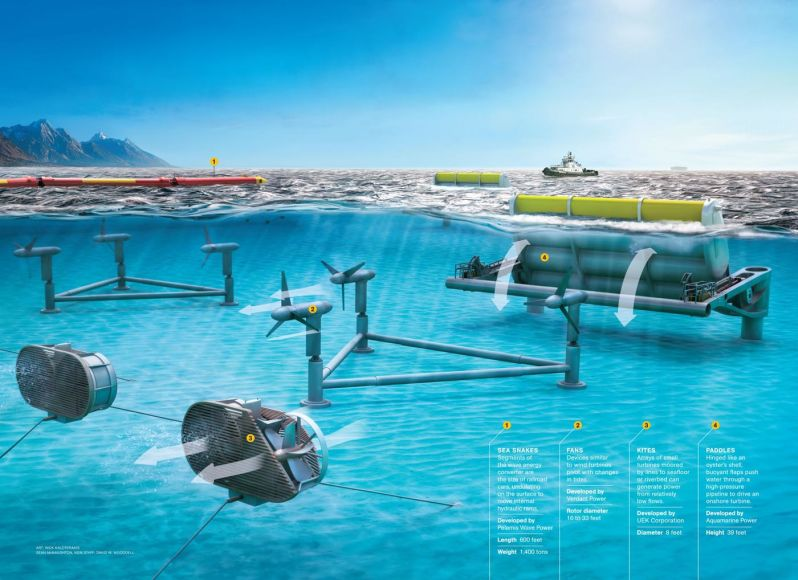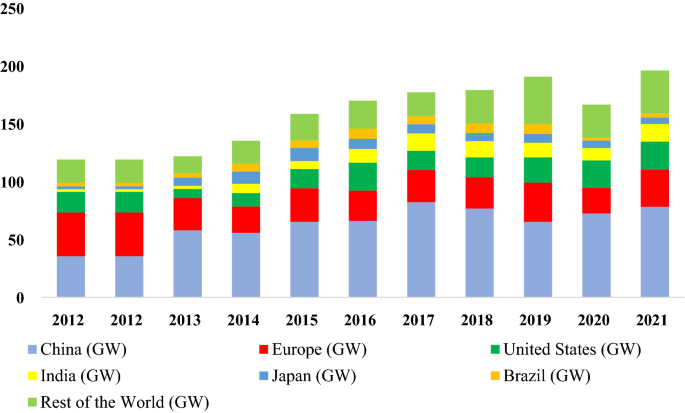
Tidal Energy
Tidal power or tidal energy – Definition
Similar to other renewable energy sources like wind and sun, it entails employing machinery to harness one of the planet's inherent energy sources. In this instance, the strength of the waves is captured via barrages or lagoons (more on those later). After that, the electricity produced by that power is transmitted to the grid, finally reaching your home.
The Romans were the first to think of employing tidal energy to turn wheels and grind grain. More recently, in the 1960s, France erected the first barrage intended to harness tidal energy and produce electricity.
Tidal energy is still not widely used compared to wind and solar energy. Since tidal power plants are expensive to construct and have other problems that we'll discuss further in this book, there aren't many of them. Tidal energy is anticipated to grow over the next few years, however, since the government estimates it has the capacity to meet 20% of the UK's energy needs.
How does tidal energy work?
Tidal energy uses ocean tides' normal rising and falling cycles to generate electricity. Tidal energy is produced in many different ways.
The Tidal Barrages
Tidal barrages are the primary method of transforming tidal power into usable energy in the form of electricity, as was mentioned in the movie. This technique makes use of a sizable barrage dam that causes the tide to flow into and out of tunnels within the dam. This water's force rotates a turbine or pushes air through a pipe, turning the turbine, depending on how it is used. This method makes it possible to constantly harvest energy in accordance with the tide's movement.
Turbines
Although they are submerged, tidal turbines are quite similar to wind turbines. A tidal generator uses the movement of the tides in the water to press against a generator and make it turn. This turbine's connection to a power generator enables the storage of electrical energy. Individual turbines called tidal turbines are frequently positioned near to one another in order to generate a lot of electricity.
Tidal Barriers or fence
In between tidal barrages and tidal turbines, there are tidal fences. With several turbines arranged along the vertical structure, tidal turbines function as a single unit. A single structure known as a "fence" connects these. To supply a lot of power to generators in a small space, these fences are frequently placed together. Tidal gates are linked to power generators, as seen below 9, enabling the conversion of energy into electricity.
Tidal ponds
Similar to barrages, tidal lagoons operate. Additionally, they employ a portion of the ocean that has been captured inside a man-made structure to power turbines. As the lagoon fills with water and subsequently empties, the turbines are spinning.
Barrages and lagoons are built somewhat differently. Like a dam, a barrage cuts across an estuary in a straight line. However, a tidal lagoon is typically developed along the existing coastline and can be designed to have the least amount of influence on the local animals.
The benefits of tidal energy
It's environmentally friendly: as we already established, tidal energy is renewable because the sea's inherent power will never run out. It also produces no carbon emissions.
The velocity of the tide is dependable, unlike the wind and sun, to the point where you could nearly set your watch by it. Knowing the tide cycles makes it simple to predict how much electricity a tidal power plant will produce each day.
The technology used to harvest tidal power is built to last around four times as long as wind and solar farms, making tidal power facilities durable. Tidal barrages made of concrete can last for 100 years.
Demerits of tidal energy
Cost: constructing tidal power plants is now quite pricey. This is due to the fact that they must be extraordinarily strong to withstand the force of the water. For instance, the upfront cost of tidal barrages is significant since concrete is typically used in their construction.
Tidal power plants' effects on the environment aren't always positive, despite the fact that the energy they create is environmentally favorable. The barrages can stop sea life from migrating and the turbines can catch fish and other creatures. It's also believed that some power stations' electromagnetic emissions can harm aquatic life.
Tides have gaps in them because of the power of the tides changes. We are aware that the tide changes twice daily. This indicates that the amount of time the sea can produce electricity each day is only about 10 hours. To maximize tidal power, large-scale battery energy storage is also required.
New developments in tidal energy
Around the world, tidal power arrays of various sizes are being planned or have already been installed, with a strong emphasis on energy production from tidal streams or currents. The most recent to start up and the first of its sort is a tidal stream array in Scotland's Pentland Firth, a body of water separating the Scottish mainland from the northern islands. The MeyGen tidal energy project started operating in phases in 2018, and by the end of 2020, its first four turbines had produced and delivered more than 35 gigawatt-hours of electricity to the grid. When fully operational, 61 underwater turbines will harness the 400 MW of energy produced by the region's fast currents.
Wales, a new industry hub, has a number of initiatives in the works. A leading marine engineering centre will be part of this development. It was approved by the governments of Wales and the United Kingdom in 2020, and one of its features will be a 90-kilometer demonstration zone that will allow the deployment of future tidal energy producing technologies.
As developers introduce new and improved tidal current technologies that show promise for overcoming significant barriers to commercial viability, there are other test sites and technology deployments at various stages in nations like Scotland, France, Japan, Korea, China, Canada, and the United States. For an industry to advance sustainably, it is essential to be able to evaluate the effectiveness and environmental impacts of new technology in actual marine conditions.
